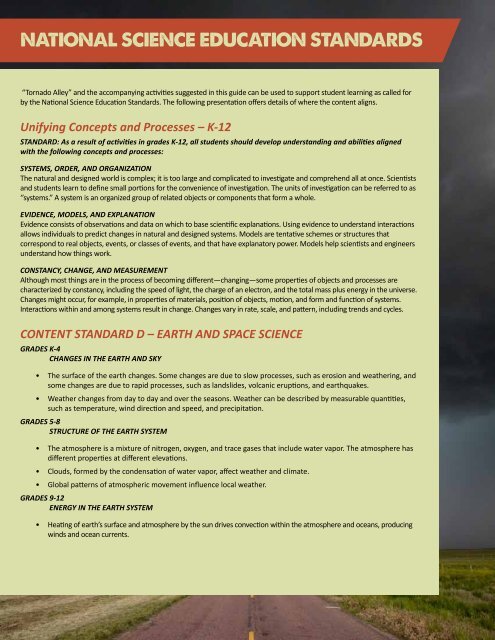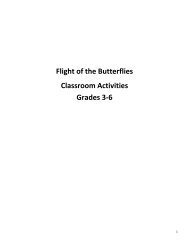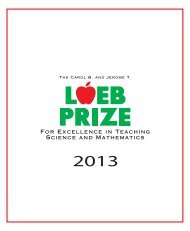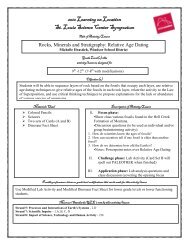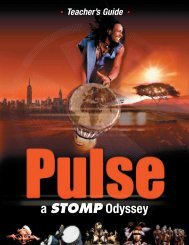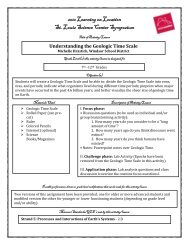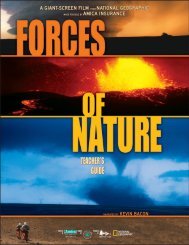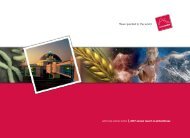Tornado Alley - Big Movie Zone
Tornado Alley - Big Movie Zone
Tornado Alley - Big Movie Zone
You also want an ePaper? Increase the reach of your titles
YUMPU automatically turns print PDFs into web optimized ePapers that Google loves.
“<strong>Tornado</strong> <strong>Alley</strong>” and the accompanying activities suggested in this guide can be used to support student learning as called for<br />
by the National Science Education Standards. The following presentation offers details of where the content aligns.<br />
Unifying Concepts and Processes – K-12<br />
STANDARD: As a result of activities in grades K-12, all students should develop understanding and abilities aligned<br />
with the following concepts and processes:<br />
SYSTEMS, ORDER, AND ORGANIZATION<br />
The natural and designed world is complex; it is too large and complicated to investigate and comprehend all at once. Scientists<br />
and students learn to define small portions for the convenience of investigation. The units of investigation can be referred to as<br />
‘’systems.” A system is an organized group of related objects or components that form a whole.<br />
EVIDENCE, MODELS, AND EXPLANATION<br />
Evidence consists of observations and data on which to base scientific explanations. Using evidence to understand interactions<br />
allows individuals to predict changes in natural and designed systems. Models are tentative schemes or structures that<br />
correspond to real objects, events, or classes of events, and that have explanatory power. Models help scientists and engineers<br />
understand how things work.<br />
CONSTANCY, CHANGE, AND MEASUREMENT<br />
Although most things are in the process of becoming different—changing—some properties of objects and processes are<br />
characterized by constancy, including the speed of light, the charge of an electron, and the total mass plus energy in the universe.<br />
Changes might occur, for example, in properties of materials, position of objects, motion, and form and function of systems.<br />
Interactions within and among systems result in change. Changes vary in rate, scale, and pattern, including trends and cycles.<br />
CONTENT STANDARD D – EARTH AND SPACE SCIENCE<br />
GRADES K-4<br />
CHANGES IN THE EARTH AND SKY<br />
• The surface of the earth changes. Some changes are due to slow processes, such as erosion and weathering, and<br />
some changes are due to rapid processes, such as landslides, volcanic eruptions, and earthquakes.<br />
• Weather changes from day to day and over the seasons. Weather can be described by measurable quantities,<br />
such as temperature, wind direction and speed, and precipitation.<br />
GRADES 5-8<br />
STRUCTURE OF THE EARTH SYSTEM<br />
• The atmosphere is a mixture of nitrogen, oxygen, and trace gases that include water vapor. The atmosphere has<br />
different properties at different elevations.<br />
• Clouds, formed by the condensation of water vapor, affect weather and climate.<br />
• Global patterns of atmospheric movement influence local weather.<br />
GRADES 9-12<br />
ENERGY IN THE EARTH SYSTEM<br />
• Heating of earth’s surface and atmosphere by the sun drives convection within the atmosphere and oceans, producing<br />
winds and ocean currents.


